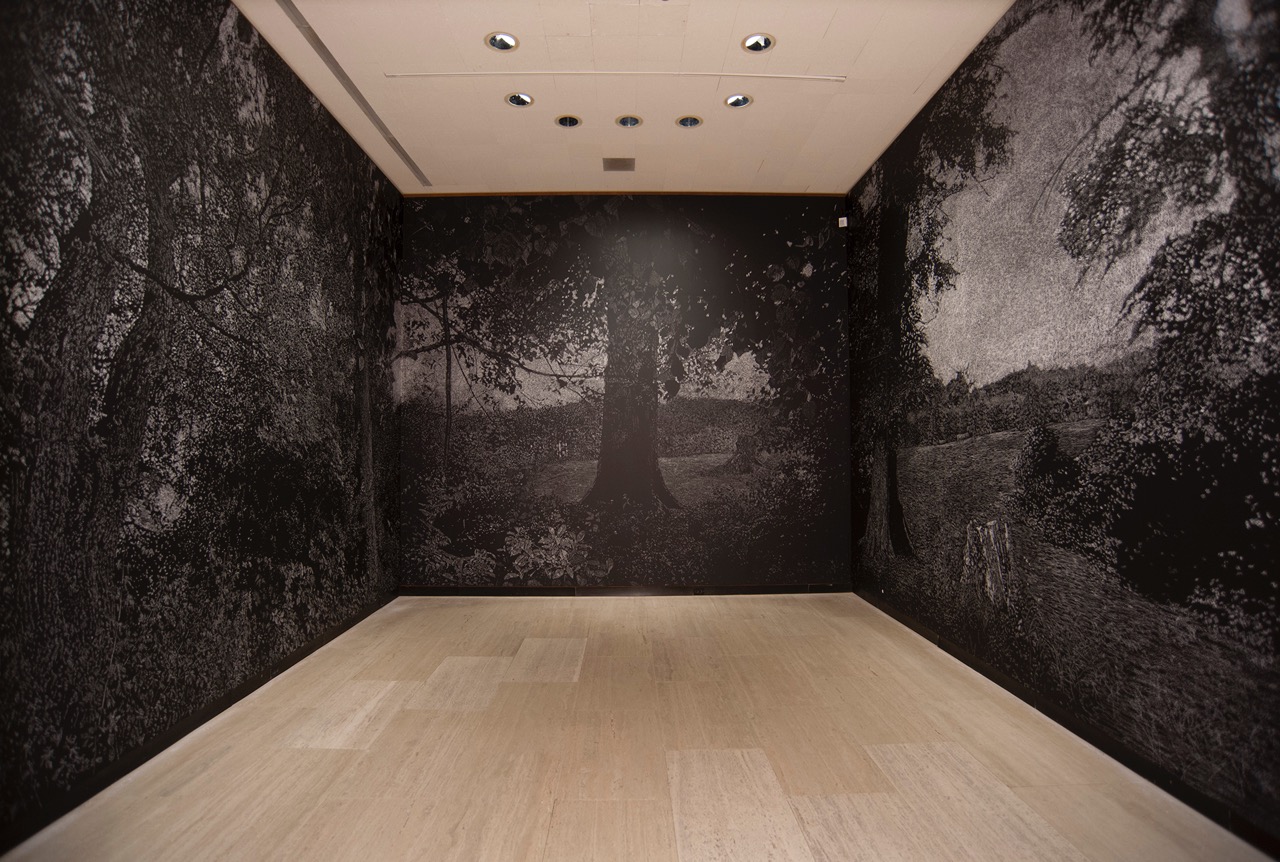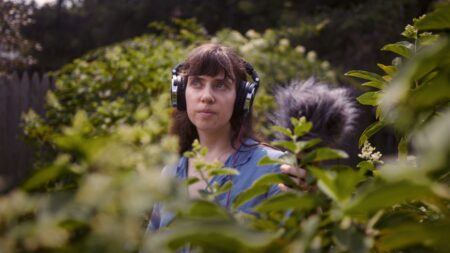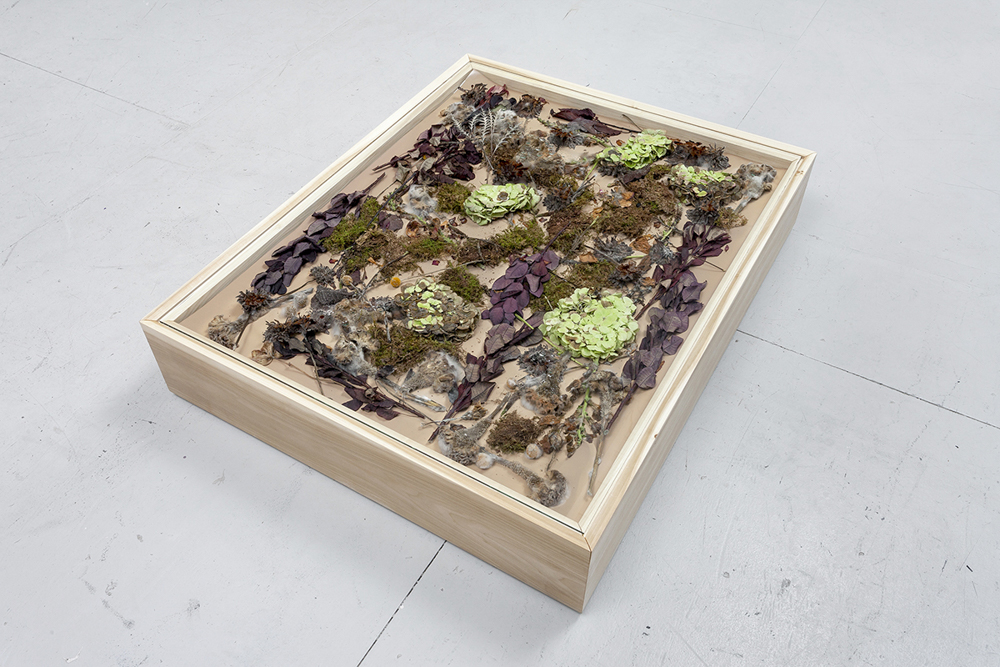Deep Focus
The Art of Letting Go: An Interview with Two Ephemeral Artists, John Steck, Jr. and Richard Barlow
Three years ago, in an attempt to make my dreams a reality, I quit my non-art day job and I haven’t stopped traveling since. Despite the transient nature of the relationships one usually makes while on the move, the artists I’ve met on this journey have planted some of the deepest roots in my psyche. Travel is an ephemeral experience, and, when I considered the theme of rust, I realized that many of the artists I’d met addressed ephemerality through their work. I have known John Steck, Jr. and Richard Barlow for just a season, and their art shares a common theme: decay. While Steck uses photography to capture momentary images, making abstract prints that fade away, Barlow creates large-scale temporary drawings with chalk.
Mark Reamy: Describe the forms used in your art.
John Steck, Jr.: [My work] is always in motion, to one extent or another. [My] images are sensitive to light, and there are other elements that can slowly add to their decay. Temperature, humidity, and time all contribute. Photographic paper and film all have expiration dates; they all eventually fog. All of the images I use in my series of disappearing photographs are from my archives, which have changed in significance over time. These are photographs that were once positively meaningful to me, but over time they brought up negative associations…I began to think of a book as a physical object and to think of ways to let the book be an extension of the projects, not just a catalog of them. [These books of disappearing photographs] would become living objects, activated by each viewing. We do not often think of photography being interactive, so it really excited me to think that I could create a unique experience for viewers.
Richard Barlow: I take a conceptual approach to drawing in a variety of media, and I have made drawings from rust stains, silver leaf, sequins, and chalk. For example, a one-thousand-square-foot temporary drawing encompassed a room at the Munson-Williams-Proctor Art Institute, in Utica, New York. I filled the walls of the gallery with a chalk drawing that took one hundred hours to complete and was painted over after the run of the exhibition. The destruction of the chalk drawings is part of their conceit, of course, and is something I intend. Their temporary, fleeting nature forces me into letting go; it can be a bit hard, but it also feels good. Something can be beautiful even if it is fleeting (perhaps more so), and it is healthy to get comfortable with this.
MR: What interests you about ephemeral art? What do you see as the relationship between time and decay in your work?
JSJ: I view time and decay as the same thing. Essentially, you cannot have one without the other. One thing I try to point out with my work is that memory is always fleeting, always in motion. It changes with us. We simply cannot look at a photograph and think it has preserved a true memory in time. While the fading images in my work are often older photographs from my archives or family pictures, I do not explain them to my viewers or why I have chosen to have those particular memories shift and change. My personal story is no longer important; it is my hope that viewers will consider their own memories and photographs. Often my most interesting conversations are with viewers thinking about their photographs that they wish would fade over time.
As an artist working in photography, I have enjoyed the challenge of creating photographs that truly represent this notion of ephemerality. [Seeing] photographs as representing life and all of its fleetingness has never felt right to me. Most photographs are records of reflected light and therefore are already separated from the actual object or event in the image. This is partly why I worked with photograms for more than ten years of my practice; I always thought they were a more factual representation than traditional photographs. I love how a photogram often documents transmitted light, showing the insides of the objects or, at times, their actual shadows. For me, making the disappearing photographs was a better way to represent the fleeting nature of life as well as of the photograph itself.

Richard Barlow. The Copse. Installation view at the Munson-Williams-Proctor Arts Institute. Courtesy of the artist.
RB: It relates to an existential concern: everyone and everything will one day be gone. We all have to adjust to a life of loss and change. I have always liked what I consider to be destabilizing images: things that change with time, or the angle of viewing, or the way one interprets them. The way time is present in my work might be tied to how memory is present, in the way that memory is constructed from various moments and glimpses. Similarly, my images are constructed from multiple temporalities. I hope that my work can put viewers in touch with how their consciousness is at work in the phenomenology of the image, in the drive to produce meaning.
MR: How does your work exist after an exhibition is over? How does the ephemeral nature of your work affect the purchase and collection of it? Does this matter to you?
JSJ: Most of the time, I exhibit newly made images. But lately, I reuse some images that have not completely faded during previous exhibitions. At the start of a new exhibition, I often like to show some images that are “mid-fade” or even one or two images that have completely faded. I find that this aids the viewer in understanding what will visually happen to the rest of the images over time. When I finish an exhibition, all of the images, even the completely faded ones, are still extremely relevant to me. They are still containers of history and memory, even if [these aspects] are not [visible]. I think of the color fields—paintings of nothing but color by Yves Klein, Agnes Martin, and Robert Rauschenberg—that hold so much history and memory.
Unfortunately, people are terrified of owning my work. I once showed my disappearing photographs to a fairly prominent New York gallery owner, and she said, “You are wasting your time trying to push this work, and if you really think you can get this work to sell, I would strongly recommend you go see a therapist.” Even after that meeting, I never let myself get discouraged. I absolutely love showing this work to everyone I can. I show it to gallery owners, museum curators, writers…I never have the assumption they would want to buy or sell this work. I am much more interested in the conversation we can have about the work and its relationship to the history of photography. I like the stories that I sometimes hear, about older fading photographs in different collections and the lengths that museums will go to preserve them. I have never sold a disappearing print; I have donated a couple of them to museum collections and traded some to friends. I do think that one day I might meet a gallery owner who is willing to take on the challenge and to see the beauty in trying to sell work that is in motion at all times, but in the end, it is of no concern to me. I make this work because I have to.
RB: For most viewers, of course, the work will mostly exist as a memory. I assume this fact affects the experience of the work while it exists; its eventual disappearance is embedded in the experience.
While I would like to think I could [radically let go of the work], I always try to get good photographic documentation of my ephemeral works. Part of this is for my own satisfaction, and of course part of it is because I need work samples to apply for jobs, exhibitions, and grants.
Of course, these chalk drawings can’t be purchased or collected, but many people ask if there’s some way I could make a permanent version for them or if there’s some way to fix the image. Since that would be counter to my philosophical goals, I haven’t yet made a permanent chalk drawing. It’s important to me that the work disappears. While I also make a range of drawings in other media that are not temporary, my chalk drawings are the ones in highest demand. If it weren’t for my salaried job as an art professor, it would be difficult to maintain an exhibiting career by making solely ephemeral work.




